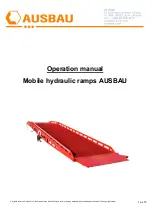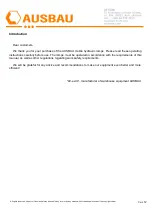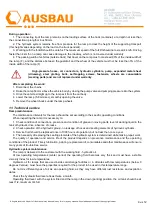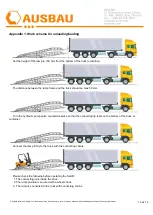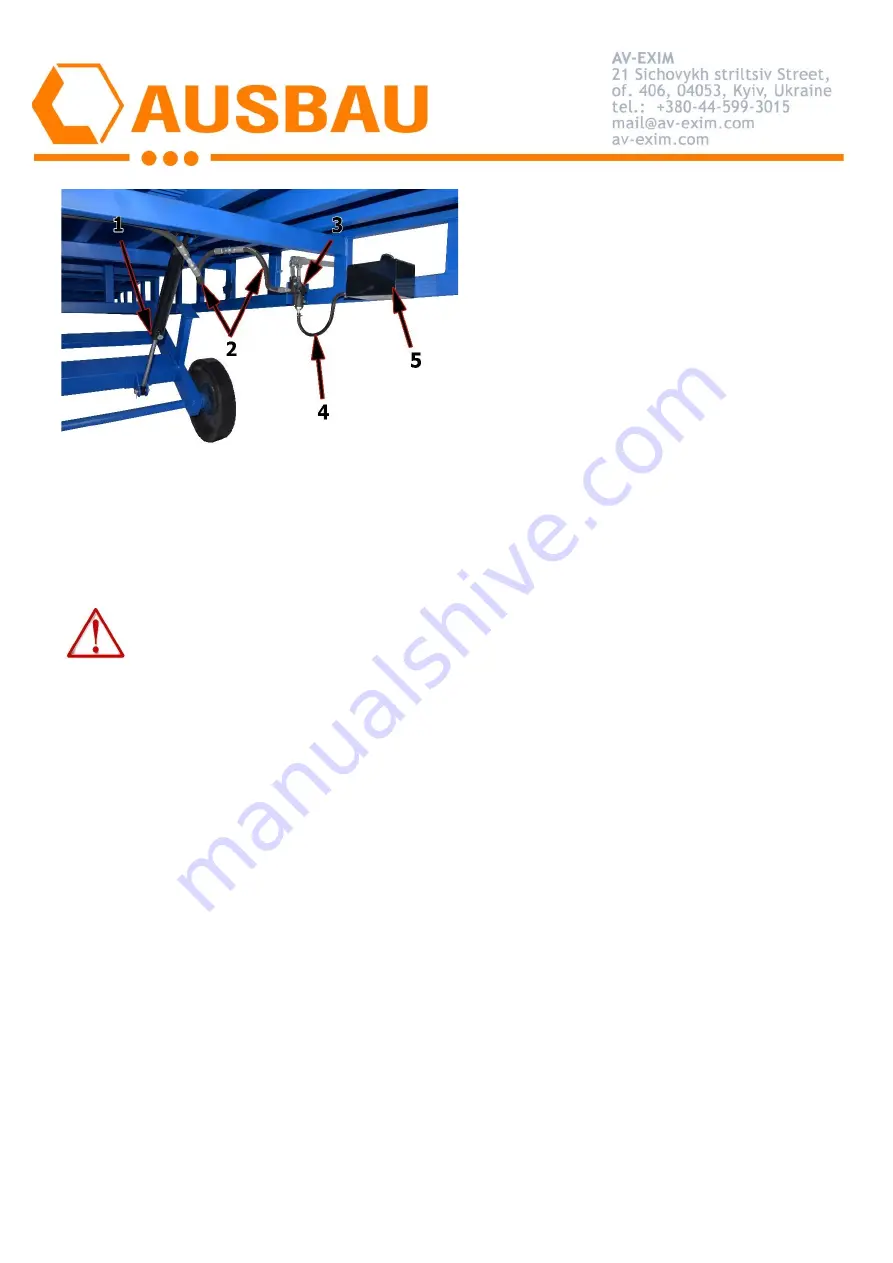
All rights reserved. No part of this manual may be used in any form or by any means without written permission of the copyright owner.
6
из
12
1
–
Hydraulic cylinder.
2
–
High pressure hoses.
3
–
Shut-off valve for pumping.
4
–
Oil transfer hose.
5
–
Oil tank with necktube.
At rest state (valve open) the oil is in the expansion tank and all hydraulic components are under no pressure. The
weight of the ram presses oil from the hydraulic cylinders into the oil tank through the high pressure hoses and the
pump. When the valve is closed, the oil backflow from the hydraulic cylinders into the tank stops and the pump, driven
by the operator, supplies oil under pressure to the hydraulic cylinders. When the valve is opened (gradually), the
pressure in the system will decrease and the oil, under the weight of the ramp, will flow back to the distribution tank
through the hose. Ramp lowering speed should not exceed 5-8 mm/sec.
Do not open the valve on the pump sharply to avoid a sudden lowering, which could
damage the mechanism. Pressure should be released slowly (5-8 mm/sec. is recommended).
The hydraulic system is filled with all-season oil. If it is necessary to operate in temperatures below 0 degrees
Celsius, change the oil to the corresponding temperature set.
6. Transportation of the product
Transportation of the packed product can be carried out by road, rail and sea transport in accordance with the rules
established for this type of transport.
Loading on transport, unloading, placing and securing on transport should be carried out by methods that ensure
the safety of the package.
Loading and unloading is carried out by means of 4 strapping ropes with hooks. The hooks are placed on top of the
item and hooked into the side guards so that the center of gravity falls inside the rectangle formed by the hooking
points.
7. Storage policy
1. The loading ramp must be stored in the lowered state.
2. To make the use of the ramp long and efficient, we recommend putting the ramp under a shelter to prevent rain
and rusting of the ramp.
3. The ramp must not come into contact with aggressive chemical compounds.

